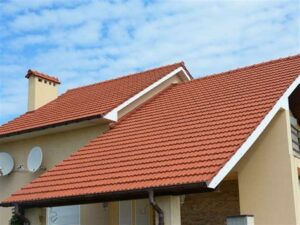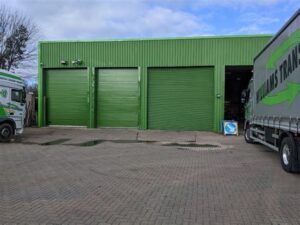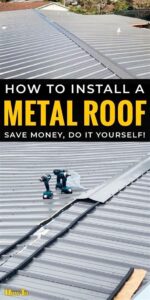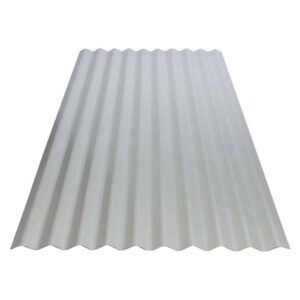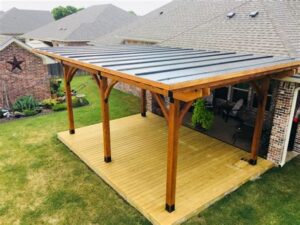Installing a metal roof can be one of the most transformative decisions for your home, yet many homeowners remain unaware of its numerous advantages and considerations. In this article, we delve into 10 fascinating insights about metal roofing that go beyond the basics. From the enduring benefits and cost factors to the intricacies of the installation process and essential maintenance tips, we aim to enlighten you on everything you need to know. We’ll also debunk common myths that may be holding you back from making this energy-efficient and durable choice for your property. By the end of our exploration, you’ll be equipped with the knowledge to make an informed decision about installing a metal roof. Discover how this modern roofing solution can elevate your home’s value and longevity.
Understanding Benefits: 10 Things About Metal Roof Advantages
When considering a new roofing option, metal roofs offer numerous benefits that make them an attractive choice. Here are 10 things you didn’t know about the advantages of installing a metal roof:
- Durability: Metal roofs are built to withstand extreme weather conditions, including heavy rain, high winds, and extreme temperatures, making them a long-lasting roofing option.
- Energy Efficiency: Reflective coatings on metal roofs can significantly reduce heat absorption, leading to lower energy bills during hot months.
- Eco-Friendly: Metal roofing materials are often made from recycled materials and are themselves recyclable at the end of their lifespan, contributing to sustainability.
- Low Maintenance: Unlike traditional roofing materials, metal roofs require minimal maintenance and rarely need repairs, saving homeowners time and money.
- Variety of Styles: Metal roofs come in various designs, colors, and finishes, allowing homeowners to achieve the aesthetic they desire.
- Fire Resistance: Metal roofs are less flammable than other roofing materials, providing an additional layer of safety against fire hazards.
- Weight: Metal roofs are lighter than many traditional roofing materials, which can reduce stress on the building structure.
- Increased Home Value: Investing in a metal roof can increase the overall value of your home due to its durability and appeal.
- Snow Shedding: The smooth surface of a metal roof allows snow to slide off easily, reducing the risk of snow buildup that can cause structural damage.
- Wind Resistance: Metal roofs are designed to withstand winds of up to 140 miles per hour, making them ideal for homes in hurricane-prone areas.
These 10 things highlight the compelling reasons to consider metal roofing as a strong contender for your next roofing project.
Cost Considerations: 10 Things You Should Factor Into Your Budget
When planning for a metal roof installation, it’s essential to understand that several costs come into play beyond just the price of the materials. Here are 10 things you should factor into your budget:
By carefully considering these 10 things when budgeting for your metal roof installation, you can ensure that you are prepared for the financial commitment and making a smart investment for your property.
Installation Process: 10 Things That Affect Metal Roof Longevity
When considering a metal roof, the 10 things that influence its longevity during the installation process are crucial. These factors can greatly impact the performance and lifespan of your roof. Here are the essential considerations:
- Quality of Materials: Using high-quality metal and components will significantly enhance durability and resistance to weather conditions.
- Proper Installation Techniques: Ensure that certified professionals undertake the installation, following best practices and manufacturer guidelines to avoid potential issues down the line.
- Roof Pitch: The slope of your roof can affect water drainage and snow accumulation. A steeper pitch can enhance longevity by promoting better runoff.
- Underlayment and Insulation: Selecting the right underlayment and insulation aids in moisture control and protects against rust, thus extending the roof’s life.
- Ventilation: Adequate roof ventilation prevents heat buildup, reducing wear and prolonging the material’s integrity over time.
- Weather Conditions: Local climate plays a significant role. For example, areas with heavy snowfall may require different installation methods than dryer regions.
- Fastener Quality: Using corrosion-resistant fasteners is vital to ensure that the roofing panels remain secured over time and to minimize rust.
- Flashing Installation: Properly installed flashing around chimneys and vents is crucial to preventing leaks and water damage.
- Seaming Methods: The type of seams used (snap-lock vs. screw-down) can influence water-tightness and, ultimately, the roof’s longevity.
- Regular Inspections: Post-installation, scheduling periodic inspections will help identify and address potential issues before they lead to more significant problems.
Considering these 10 things during the installation process can greatly enhance the lifespan of your metal roof, ensuring that it stands strong against the elements for years to come.
Maintenance Tips: 10 Things to Ensure Your Metal Roof Stays Strong
Maintaining your metal roof is crucial for ensuring its longevity and performance. Here are 10 things you should do to keep your metal roof in top condition:
- Regular Inspections: Conduct inspections at least twice a year and after severe weather. Look for signs of rust, loose fasteners, or dents.
- Clean Debris: Remove leaves, branches, and other debris from the roof surface to prevent water pooling and blockages that could lead to rust.
- Check for Rust: Regularly inspect for rust spots. If found, treat them promptly with a rust-inhibiting primer and a matching topcoat.
- Seal Joints and Flashing: Ensure that seams, joints, and flashing are well-sealed to prevent leaks. Use quality sealants designed for metal roofs.
- Gutter Maintenance: Keep gutters and downspouts clear to ensure proper drainage. Clogged gutters can lead to water backing up and damaging the roof.
- Avoid Using Harsh Cleaners: When washing your metal roof, avoid abrasive cleaners or scrubbing pads that could scratch the surface. Mild soap and water are safest.
- Trim Overhanging Branches: Prune trees that hang over your roof to prevent branches from damaging the surface during storms.
- Install Snow Guards: If you live in a snowy area, consider installing snow guards to manage snow accumulation and prevent dangerous avalanches from the roof.
- Watch for Insect Damage: Regularly check for signs of insect damage, particularly around seams and edges. Treat any infestations promptly.
- Consult Professionals: For repairs or significant maintenance work, it is best to hire professionals who specialize in metal roofing for quality service.
By incorporating these 10 things into your maintenance routine, you can help ensure that your metal roof remains strong and durable for years to come.
Common Myths: 10 Things You Didn’t Know About Metal Roofing Misconceptions
When it comes to metal roofing, there are numerous misconceptions that can deter homeowners from considering this durable option. Here are 10 things you didn’t know about metal roofing myths and the truths behind them:
- 10 things that suggest metal roofs are too noisy: Many believe that metal roofs create excessive noise during rain or hail storms. However, with proper insulation and underlayment, this noise can be significantly reduced, making them just as quiet as traditional roofing.
- 10 things about metal roofs indicating they are not energy efficient: In reality, metal roofs can reflect solar heat, reducing cooling costs in hot climates. Their energy efficiency can lead to lower energy bills.
- Some claim that metal roofs rust easily. In fact, modern metal roofing materials are treated with protective coatings that prevent rust and can withstand the elements for decades.
- 10 things that suggest metal roofs are only suitable for commercial buildings: Metal roofing is increasingly popular in residential areas and can enhance the aesthetic appeal of homes, offering various styles and colors.
- There is a belief that metal roofs will increase lightning strike likelihood. Metal roofing does not attract lightning; instead, it is a non-combustible material that is safer during storms.
- Many think that metal roofs are too expensive. While the initial investment might be higher than asphalt shingles, their longevity and low maintenance costs often make them more economical over time.
- 10 things imply that metal roofing is difficult to install: Properly trained professionals can install metal roofs efficiently. Homeowners should ensure they hire experienced contractors for the best results.
- Some assume that metal roofs can’t be installed over existing roofing. However, many metal roofs can be installed over existing shingles, saving on labor and disposal costs.
- There is a perception that metal roofs are limited to one color. In reality, metal roofing comes in a wide variety of colors and finishes, allowing homeowners to choose options that suit their style.
- 10 things that signify metal roofs are less environmentally friendly: On the contrary, metal roofs are often made from recycled materials and can be recycled at the end of their life cycle, making them a sustainable roofing choice.
By debunking these myths, homeowners can make informed decisions regarding their roofing options, including the many advantages metal roofs offer.
Frequently Asked Questions
What are the benefits of installing a metal roof?
Metal roofs are durable, energy-efficient, and can last for decades with minimal maintenance. They also reflect heat, which can lower cooling costs.
How does the installation process for a metal roof differ from traditional roofing?
Metal roof installation typically involves a different underlayment and fastening system compared to asphalt shingles, focusing on ensuring proper ventilation and drainage.
What types of metal are commonly used for roofing?
Common materials include aluminum, steel (both galvanized and galvalume), copper, and zinc, each offering different aesthetic and durability characteristics.
Can I install a metal roof over an existing roof?
Yes, in many cases a metal roof can be installed over an existing roof, which can save time and labor costs. However, certain local building codes must be followed.
What climate conditions are metal roofs best suited for?
Metal roofs perform well in extreme weather conditions, including heavy rain, snow, and high winds, making them ideal for various climates.
Do metal roofs reduce energy costs?
Yes, metal roofs can significantly reduce energy costs by reflecting solar heat and providing better insulation, keeping homes cooler in summer and warmer in winter.
Are metal roofs noisy during rain or hail?
While metal roofs can be noisier than other materials during heavy rain or hail, proper insulation and underlayment can significantly reduce sound transmission.
